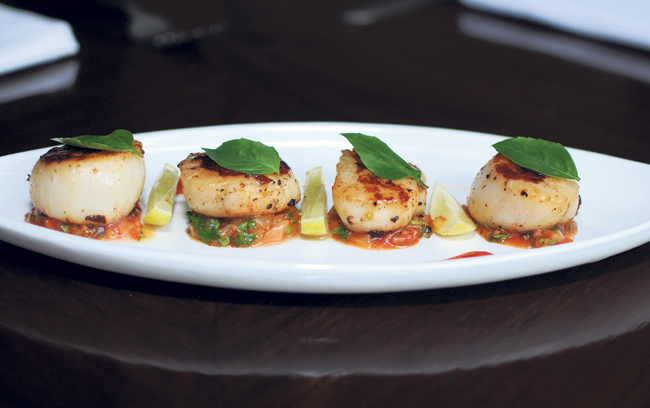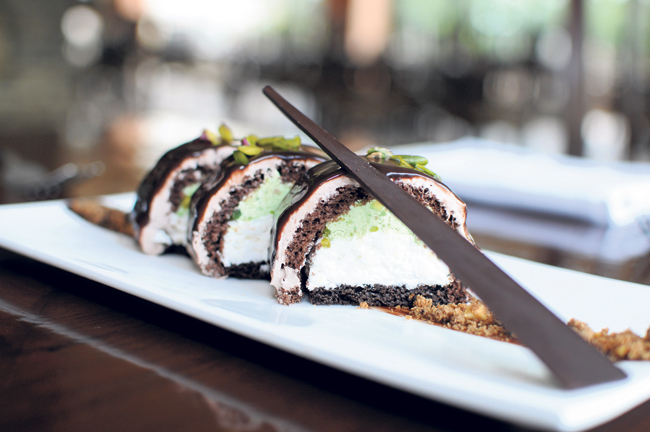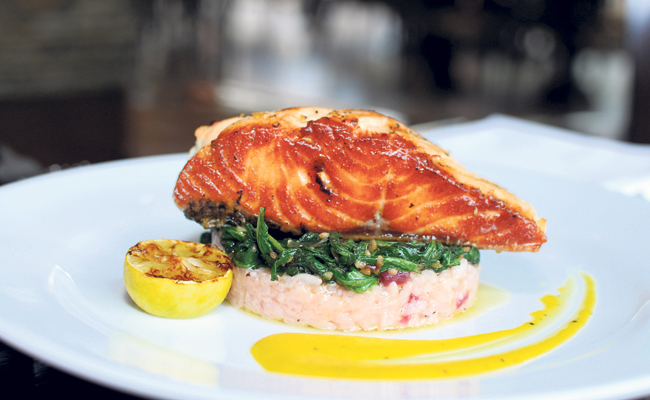“Sometimes it takes a couple of days to get the plating right. Each component of the dish makes a difference, thus my ideas of how I want to plate the dish can also alter the menu.”
Sure, you make good food but the responsibilities of a cook don’t just end at the stove. Food presentation is just as essential to the success of a dish as its taste and flavor. After all, memorable dining experience is one that tempts all the senses, not just the palate.
It’s also a philosophy with which Executive Chef N. Gopi has been running his kitchen at the Hyatt Regency Hotel for nearly two years now. In fact, we hear they have already begun working on plating ideas for the Christmas and New Year season – all because it is just that important.
So The Week caught up with the chef to talk about the art of plating a meal. Even though this is said to be a delicate balance between creativity and strategy, it is something any home cook can learn. Here he shares some basic tips on how to plate like a pro.
Plan ahead
Chef Gopi agrees that the first thing a home cook looking to host a dinner party needs to decide is the menu. However, he reveals that his pick of dishes aren’t only based on aspects such as seasons, taste, and occasion but also plating.
“Sometimes it takes a couple of days to get the plating right. Each component of the dish makes a difference, thus my ideas of how I want to plate the dish can also alter the menu,” explains chef Gopi.
Lessons from Bangladesh

Contrary to popular belief, plating is rarely ever a second thought so planning ahead is crucial. Since there are many things to take into consideration and also because plating is a creative process that anybody can have a lot of fun with, the chef recommends sitting down with a pen and paper. He notes that many fans of the MasterChef series must be aware of a very helpful technique. All the contestants prefer drawing and sketching to visualize the plate and execute their vision more efficiently later on. He believes this should help home cooks as well.

Pick your plate
Consider your plate as your canvas, and your food as your medium. The size, shape and color of your plate will have a direct impact on the overall appearance of your dish. And indeed, in case you are wondering, yes, white is a popular color choice for a reason. It creates a high contrast when paired with other colors, which means your food will be the focus rather than the afterthought.
Contemplate color
The colors of the foods you’re plating should apparently be the leading determinants for how to best highlight a dish’s strong points. However at the same time, chef Gopi can’t stress enough the importance of balancing the colors. For instance: In the salmon dish, the color combo of pink salmon and beetroot risotto (also pink) is broken by some green of the welted spinach. Further, saffron béarnaise sauce helps balance the color on the side. Often while plating the goal is to draw attention to the positives of a meal by juxtaposing bright accent colors with more neutral tones.
If this same dish was being presented on black plate though, chef Gopi says he would never serve a pink risotto but keep it white and similarly instead of spinach, he would use leeks because their color would complement the black plate a lot better.

Play up texture
The texture of food creates an immediate attraction to the eye, be it the extra-crispy skin of roast chicken, a creamy dollop of crème fraîche. Keep a plate visually stimulating by pairing such contrasting textures with one another, which also creates an intriguing textural contrast in each bite.
One of the most common mistakes committed while plating though is apparently failing to maintain a consistency in proportions. While adding components for textures and colors is smart, chef Gopi believes that the cook must ensure there is the right amount of ingredients and the plate complements the dish, not too big or too small. Strike the right proportion of protein, carbohydrates and vegetables to create a nutritionally balanced meal.
Garnish with a purpose
All garnishes on a plate should both have a purpose and be edible. Do not garnish with a food that is not included in a recipe. For example, a dish garnished with fresh rosemary doesn’t require sprigs of parsley in it. To throw in parsley for some green color doesn’t make sense here plus there is a chance it might ruin the taste of her meal too.
Similarly, the freshness of the veggies and the garnish makes a big difference in the appearance of the dish. It’s a factor that can add extra charm to a dish.

Cleanliness counts
And finally, perhaps the most important point out of all the things to be kept in mind: cleanliness counts. Keep your canvas clean by wiping away stray crumbs or dribbles of sauce. Despite all the effort you have put in, such outliers will distract from the focal point and create a less polished look to your plate.
Pro tip
For those enthusiasts eager to develop their plating techniques, chef Gopi highly recommends www.stockfood.com. This site apparently has tons of ideas, inspirations and advices about all of this.




































